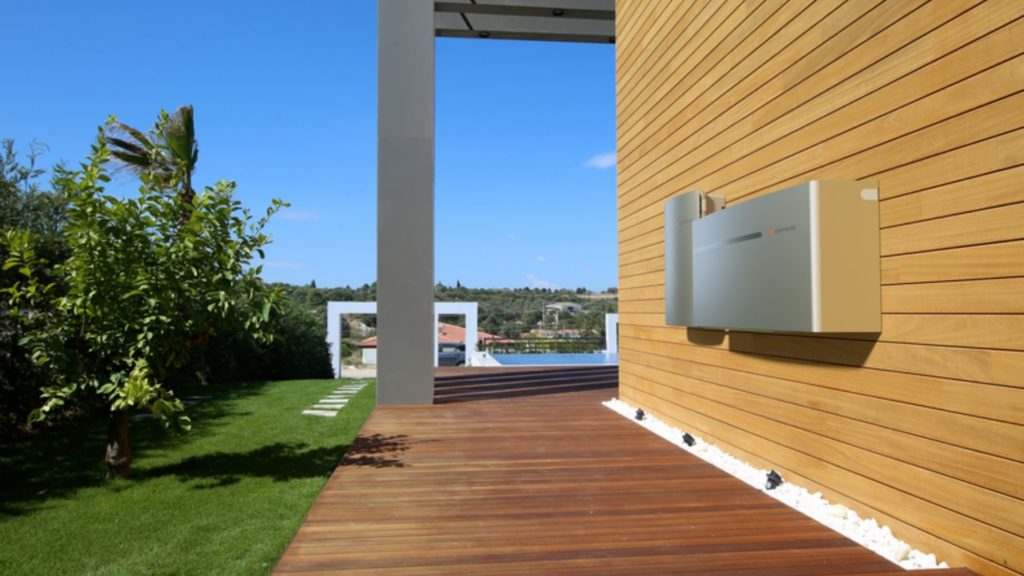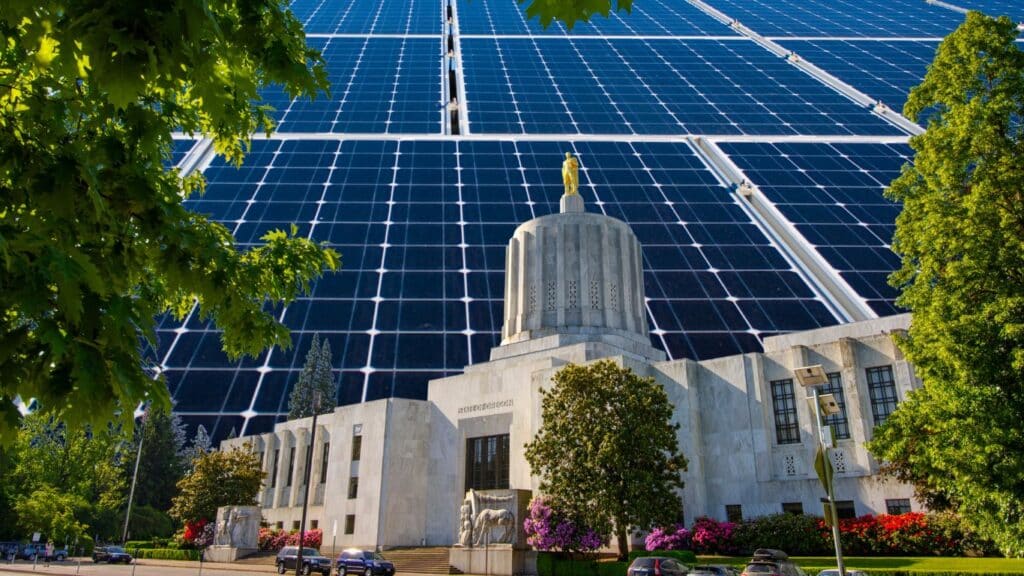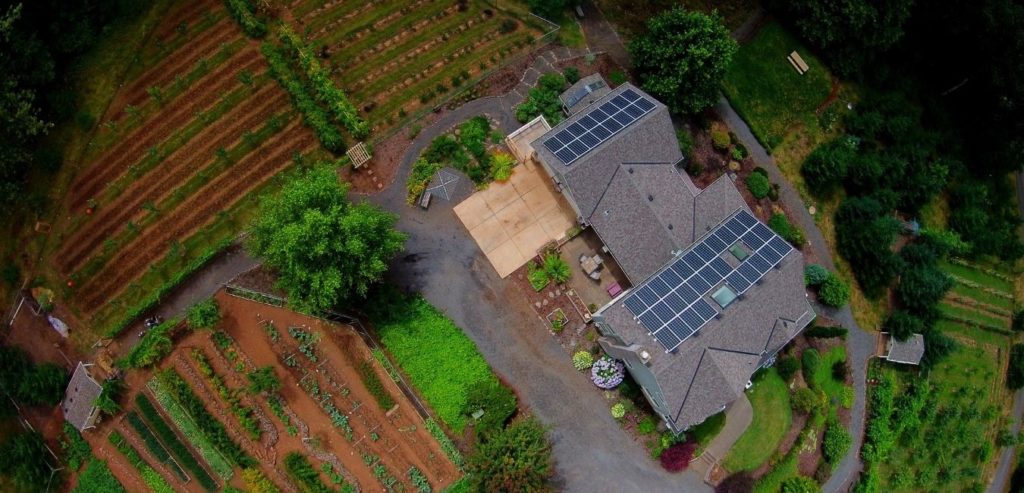Oregon Solar Panels: Getting Started
Welcome to our comprehensive guide on everything solar panels in Oregon, thoughtfully crafted to empower you on your journey towards sustainable energy independence.
Given its depth, you may find the table of contents particularly helpful in navigating straight to the information you seek.
Set aside around 10 minutes to fully explore, and let’s illuminate your path to a brighter, eco-conscious future with local expertise and unmatched dedication to quality and service.
Why Solar in Oregon?
Oregon’s landscape is a rich tapestry of mountains, valleys, and vast open spaces, each offering its own advantages and challenges when it comes to harnessing solar energy.
From the sun-soaked plains of Eastern Oregon to the verdant, rain-kissed West, the opportunities for embracing solar power are as diverse as the state itself. Let’s delve deeper into what makes each region unique in its solar potential.
Eastern Oregon
Eastern Oregon is characterized by its wide-open landscapes and an abundance of sunny days. This region benefits significantly from higher solar irradiance levels, making it a prime area for solar energy production.
Benefits Installing in Eastern Oregon Include:
- Optimal Solar Production: With more sunny days on average than the western part of the state, Eastern Oregon offers excellent conditions for generating solar power.
- Rural and Commercial Opportunity: The expansive, less-populated areas provide an ideal setting for large-scale solar farms, as well as opportunities for agricultural and rural businesses to decrease utility costs through solar investment.
Please Consider:
- Weather Extremes: While the abundance of sunshine is a boon for solar energy, the region does experience more extreme weather variations, including high winds and significant temperature swings, which can affect system performance and longevity.
- Infrastructure: Despite the vast potential, some remote areas may have limited access to the necessary infrastructure or services for installation and maintenance of solar systems.
Western Oregon
Western Oregon’s landscape is famously lush, fed by higher rainfall levels and cooler temperatures. While at first glance, it may seem less than ideal for solar, modern technology has made solar panels remarkably efficient, capable of capturing solar energy even on cloudy days.
Benefits Installing in Western Oregon Include:
- Efficient Technology: Today’s solar panels are highly effective at generating power in a variety of light conditions. Even during overcast days, solar panels can capture diffused sunlight to produce energy.
- Energy Independence: For homeowners and businesses in Western Oregon, solar panels provide an opportunity to reduce reliance on the grid, lower energy costs, and contribute to environmental sustainability, all while contending with the region’s higher energy prices.
Please Consider:
- Lower Peak Efficiency: While modern panels efficiently capture diffused sunlight, the peak solar production in Western Oregon may be lower compared to Eastern Oregon, requiring careful system design and placement to maximize energy production.
- Environmental Responsibility: The high rainfall and dense foliage that define Western Oregon’s beauty can require additional considerations, such as tree trimming or more frequent panel cleaning, to maintain system efficiency.
Oregon’s Solar Potential by City
The values provided are illustrative and intended to showcase how sunlight varies across our state. Individual experiences with solar energy may vary.
| City | Solar Resource Value (kWh/m²/day) | Number of Sunny Days |
| Portland | 4.5 | 144 |
| Bend | 5.2 | 158 |
| Eugene | 4.3 | 155 |
| Salem | 4.6 | 150 |
| Medford | 5.0 | 195 |
Pros & Cons of Installing Solar Panels
Considering the transition to solar energy for your home involves weighing the numerous benefits against the possible drawbacks. Here’s a breakdown of the pros and cons of installing solar panels to help you make an informed decision.
Pros of Installing Solar Panels
- Reduces electricity bills: Generate clean, renewable energy, cutting down on monthly utility expenses.
- Environmental benefits: Lower carbon footprint by reducing reliance on fossil fuels.
- Increases property value: Homes with solar energy systems can see a higher market value.
- Energy independence: Reduce dependency on the grid and fluctuating energy prices.
- Incentives and rebates: Tax credits, rebates, and other incentives can offset the installation cost.
- Net metering: Allows homeowners to sell excess energy back to the grid, potentially earning credit.
- Improves energy security: Contributes to a more resilient power supply for the community.
- Technological advancements: Ongoing improvements in solar technology are increasing efficiency and reducing costs.
Cons of Installing Solar Panels
- Initial installation costs: High upfront investment, even with incentives.
- Weather dependency: Efficiency can be impacted by cloudy or rainy weather.
- Maintenance and repair: While generally low, solar panels do require some maintenance and occasional repairs.
- Space requirements: Large installations require significant roof space or land area.
- Aesthetic concerns: Some homeowners associations (HOAs) or individuals may have issues with how solar panels look.
- Complexity of installation: Proper installation can be complex and usually requires professional services.
- Long payback period: The return on investment can take several years, depending on energy usage and system cost.
Solar Plus Battery Backup
Incorporating batteries with your solar installation is a forward-thinking choice to power essential appliances—like your refrigerator, freezer, and AC—during outages. While the initial investment may be higher, the long-term peace of mind is invaluable. Consider the moments after a natural disaster, such as an earthquake or forest fire, when the grid fails.

During these times, the true worth of a dependable electrical supply shines through:
- Essential Reliability: Batteries ensure your most critical appliances are functioning when you need them most.
- Priceless Power: Amidst an outage, the cost of electricity transcends monetary value—energy security is paramount.
- Empowered Preparedness: Be ready for unforeseen circumstances with a self-reliant power system.
- Qualitative Value: Safety and convenience during emergencies cannot be overstated.
Your empowerment is our mission. Contact Sunbridge Solar for a free consultation and learn how to safeguard your home with solar plus battery backup, where resilience meets sustainability.
Do Solar Panels Save Money?
Solar panels can significantly reduce energy bills, with long-term savings making them a financially sound choice for many homeowners. This is particularly true for those facing high utility bills and residing in areas with abundant sunlight.
On average, our customers experience substantial financial savings, with yearly reductions in energy bills around $800. This saving reflects our commitment to offering high-quality, sustainable solar solutions that significantly lessen the financial burden of energy costs for local families and businesses.
Do Free Solar Panel Programs Exist?
While truly free solar panel programs don’t exist, numerous incentives for low-income households are available to help reduce costs significantly.
Various grants, rebates, and tax credits can make solar panels affordable, if not nearly free, depending on the state and available programs. It’s worth researching local incentives to make solar energy accessible and cost-effective.

Initial Investment into Oregon Solar Panels
Average Costs Before Incentives:
- Small System (3-4 kW): Ideal for modest energy consumers, averaging $9,000 – $12,000.
- Medium System (5-7 kW): Suited for average-sized homes, typically costing between $15,000 – $21,000.
- Large System (8-10 kW): Designed for higher energy needs, with costs ranging from $24,000 – $30,000.
These figures provide a baseline. Yet, it’s the dynamic incentives and rebates in Oregon that truly redefine the solar landscape, making it an accessible and smart choice for many.
Latest Oregon Solar Incentives
As Oregonians, we have the privilege of residing in one of the most beautiful states, defined by our collective commitment to environmental stewardship and sustainability.
Recognizing the role renewable energy plays in this mission, our state has established a comprehensive range of solar incentives and rebates, designed to reduce the total costs to make solar energy accessible and appealing for both Oregon homeowners and businesses.
Let’s explore these incentives, each a stepping stone towards a cleaner, greener Oregon.
Energy Trust of Oregon (ETO) Incentives
In the heart of our services lies the opportunity to benefit from the Energy Trust of Oregon utility incentives. Available to customers of Portland General Electric and Pacific Power, these incentives are crafted to make the shift to solar smoother and more affordable.
- For PGE Service Area: $500 per project.
- For Pacific Power: $600 per project,
Portland Clean Energy Fund (PCEF)
Pioneered by the communities who envision a sustainable future for all, PCEF is an initiative meant to elevate the essence of Portland through clean energy projects. This fund is about more than just energy; it’s about creating jobs and fostering economic growth that benefits everyone.
Solar Within Reach Program
Addressing affordability head-on, the Solar Within Reach program is tailored for families who may have thought solar was beyond their grasp.
- Income Qualification: The program stretches to accommodate a wide income range, from a single-person household earning up to $62,530 to families of eight making up to $165,948.
- Incentive: The incentives scale up to $1.40 per watt, with a maximum cap of $8,400, subtly varying for Pacific Power and PGE customers. This includes additional incentives for battery storage, emphasizing resilience and reliability.
Solar Storage Rebate Program
The Oregon Department of Energy champions a greener future with rebates aimed to reduce the net cost of solar installations by receiving a rebate up to 60% or a ceiling of $5,000 for solar systems and $7,500 for those including battery backup.
Federal Solar Investment Tax Credit (ITC)
The ITC stands as a testament to the national commitment to clean energy, affording a 30% solar tax break on the total system cost through 2032— a considerable incentive for both residential and commercial installations to embrace solar power.
Oregon Net Energy Metering (NEM)
Oregon’s Net Energy Metering is a reciprocal energy exchange program, allowing you to contribute surplus solar energy back to the grid in return for utility bill credits. It’s an effective system that ensures your investment pays off in more ways than one.
USDA REAP Grant
Specifically designed to foster renewable adoption and energy efficiency among agricultural producers and rural small businesses, the REAP Grant exemplifies our broader commitment to making green energy viable across diverse sectors.
Other Local Solar Rebates
- Salem Electric: A direct rebate of $300 per kW, with a maximum of $1,500 or 50% of the project cost, to promote solar installations within its service area.
What is TSRF?
Total Solar Resource Fraction (TSRF) is a critical measure that indicates the amount of solar energy available to a solar panel system based on its specific location. It considers factors such as shading, panel orientation, and local weather patterns to calculate how efficiently a system can convert sunlight into electricity.
Essentially, TSRF helps to evaluate the potential efficiency and energy yield of solar installations, guiding decisions for optimal setup and location.
If a site does not meet these TSRF thresholds, it becomes ineligible for most state-wide solar incentives, limiting financial benefits. However, sites below these values may still qualify for the federal solar investment tax credit, providing some relief and encouragement for solar adoption.
The required TSRF values for inspections are as follows:
- On-Site Inspections: A TSRF of 75% or above is necessary.
- Remote Inspections: A TSRF of 80% or above is required.
Free Solar Estimate Tool
Our free Oregon Solar Calculator, powered by Google’s Project Sunroof, offers you a quick and accurate estimate of your solar potential in just minutes.
While this tool provides a solid introductory analysis, it’s important to note that our personalized, on-site solar inspections deliver even more precise evaluations tailored specifically to your home or business.
We invite you to start with the calculator and then connect with us for an in-depth, on-site assessment to ensure the most effective solar solution designed just for you.
Are Solar Panels Worth It in Oregon?
Absolutely! Solar panels are worth it in Oregon. Beyond the financial savings on electric bills and the significant reduction in carbon footprint, investing in solar panels in Oregon means securing a sustainable future for generations to come.
Plus, Oregon’s commitment to clean energy, demonstrated through generous state and federal incentives, makes now the perfect time to consider solar.
Oregon Solar Panels FAQ
Here’s a list of 10 frequently asked questions about solar panels in Oregon along with their answers:
What are the benefits of installing solar panels in Oregon?
Oregon’s climate is conducive to solar power, with enough sunny days to make systems efficient. Benefits include lower electricity bills, incentives, and contributing to a cleaner environment.
Is Oregon a good state for solar energy?
Yes, despite its reputation for rain, Oregon gets ample sun for solar energy production, and the state encourages solar adoption through incentives and rebates.
What incentives are available for solar panel installation in Oregon?
Oregon offers several incentives, such as the Energy Trust of Oregon rebate, federal tax credits, and net metering programs.
How does net metering work in Oregon?
Net metering allows solar panel owners to sell excess electricity back to the grid, earning credits that can offset future utility bills.
How much does it typically cost to install solar panels in Oregon?
The cost varies based on system size and equipment, but with incentives, the average range is between $10,000 to $20,000 after rebates and tax credits.
How long do solar panels last in Oregon?
On average, solar panels can last 25 to 30 years, with minimal maintenance.
Can I install solar panels myself in Oregon?
DIY installation is not recommended due to safety concerns, warranty issues, and complexity. Professional installation is advised.
Will solar panels increase the value of my home in Oregon?
Yes, homes with solar installations often see an increase in property value, making them attractive in the real estate market.
What size solar system do I need for my home in Oregon?
The size depends on your energy usage and roof space. An assessment by a solar provider can give you an accurate estimate tailored to your needs.
Do I need a permit to install solar panels in Oregon?
Yes, you’ll typically need a building, electrical permit, and sometimes county permits. Unlike some other companies, Sunbridge solar will handle this process for you.
Take the Next Step
Curious about the cost to install solar panels in Oregon for your home or business? Or perhaps, how you can benefit from the Oregon solar storage rebate? Sunbridge Solar offers a free, no-pressure consultation to answer all your questions. With our expertise and commitment to quality, we’ll help determine if your property is a good fit for solar and detail the potential savings and benefits.
Get My Free Consultation
Oregon’s push towards renewable energy is stronger than ever, and by considering solar, you’re taking a significant step towards a more sustainable lifestyle. Ready to explore how much you could save and contribute to our planet’s health?
Schedule your free consultation with Sunbridge Solar today and embrace the sunny side of Oregon life.


